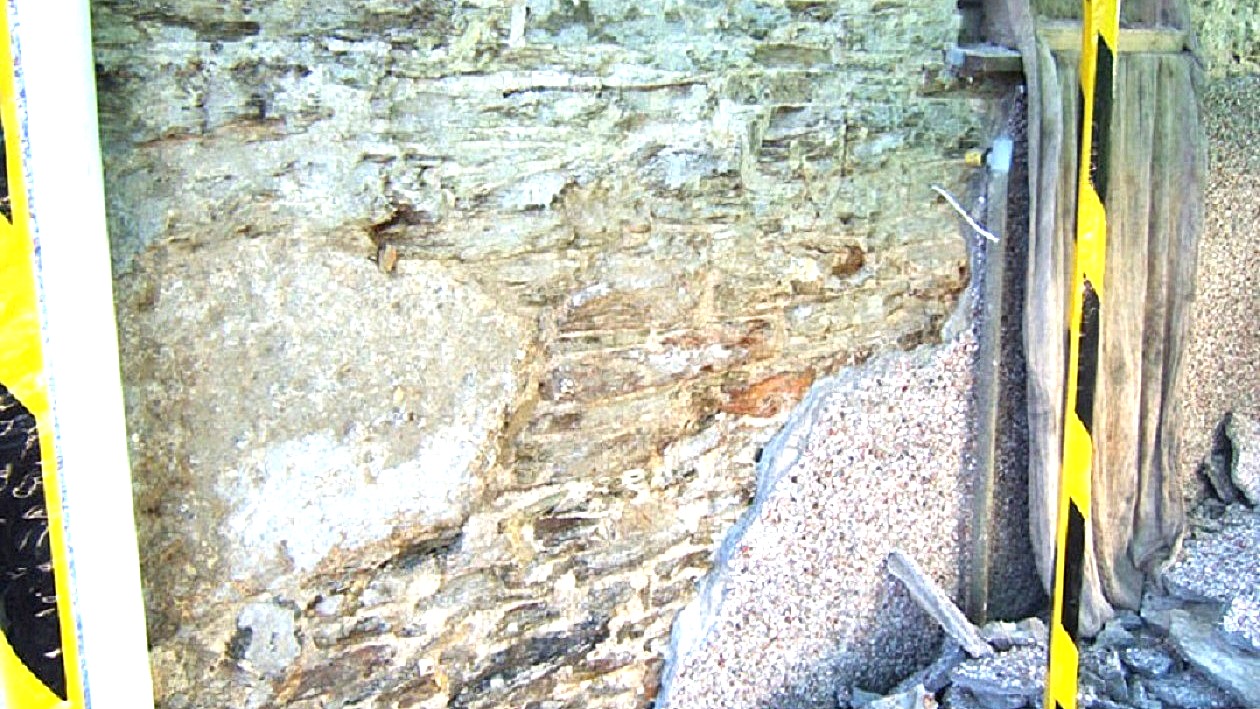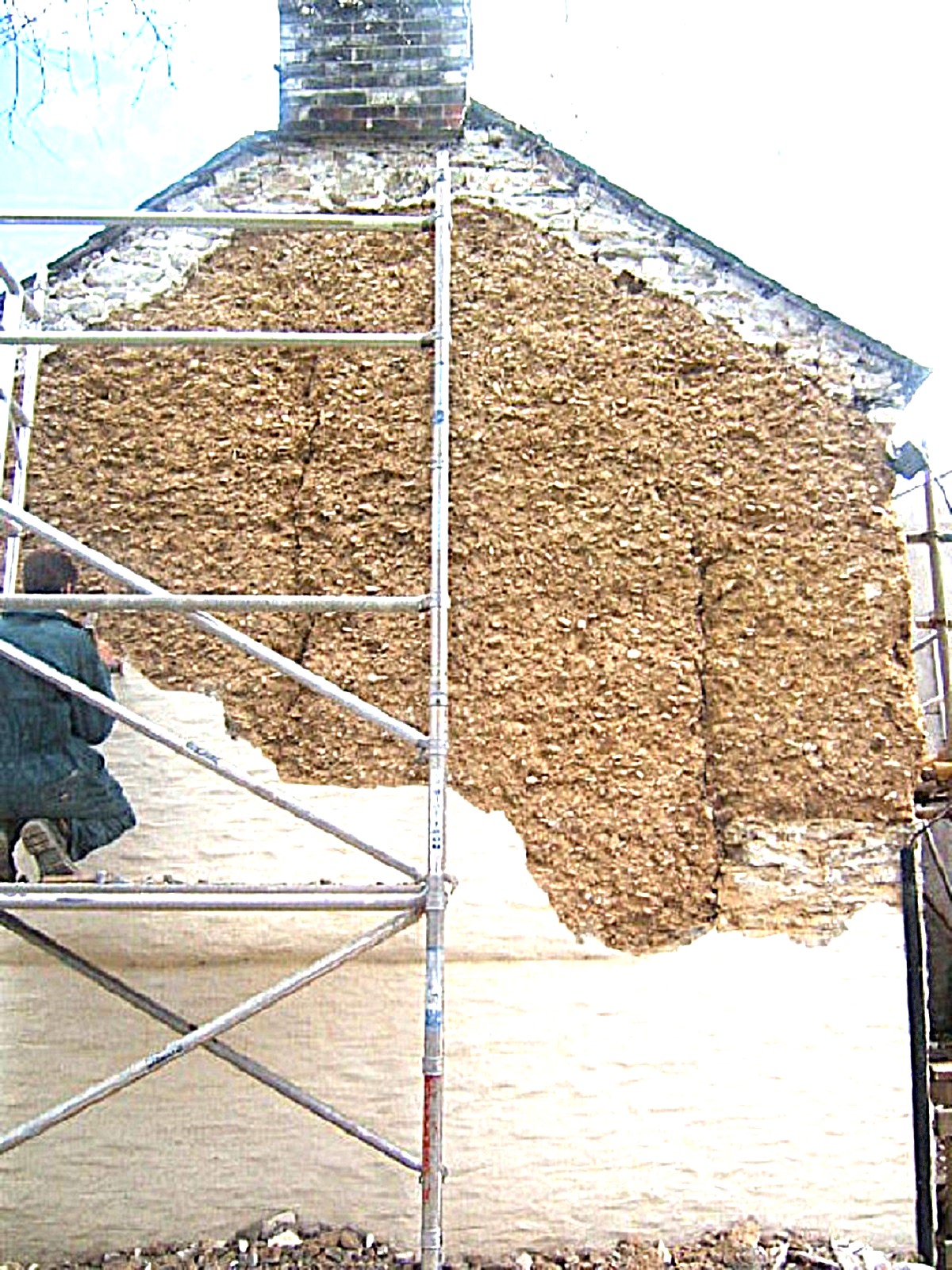Limitation Measures
Total eradication of damp in old buildings in Cornwall is virtually impossible to achieve. However, significantly reducing the levels of damp can be achieved by adopting some or preferably all of the procedures described below.

All buildings/walls are different and the extent and presence of damp varies, however in our experience, here in Cornwall, these methods have proven successful in damp limitation.
- Cut-back or remove all vegetation in close proximity to the wall. Climbing ivy should be severed at the root base and left to die-off naturally. Removal of living ivy from the wall, especially if water penetration to the substrate has occurred, can result in unnecessary damage to the cob and/or stonework.
- Remove all existing impermeable applications, for example, current renders, cement based plasters and cement pointing. It is recommended that this should be done using hand tools, not machinery, only so as to not damage and/or disturb the substrate.
- The installation of land drains at the base of all external walls has three main functions. Firstly, rainwater run-off from the wall itself will naturally find its way down to the drainage trench. Secondly, all rainwater from the roof, via gutters and gulleys, will go into the drainage pipe. And finally, any water at ground level will find its way into the trench before reaching the base of the wall. Capillary movement of water to the wall base would be negligible. All land drain pipes should run to a suitably distanced soak away area.
- With the substrate now exposed, whether cob and stone, stonework or old brick, the re-introduction of a cladding is not always desired. An exposed cob wall for example, assuming all of these procedures are followed, will last another 200 years. If a protective cladding and/or pointing is required then a lime application must be used.
- Broken, slipped or missing roof slate/tiles must be replaced, especially over the wall head. Hip and half-hip ridge tiles (where applicable) must be secure and watertight. If hip tiles are not used then the appropriate fish-tail flashings must be in good weather proof condition.
- Guttering and facia boards must be in good condition with no leaks and have a suitable fall toward the running outlets. Downpipes should be leak-free and secure. All downpipes should fit directly into the gulleys and flow into the land drain.
- When cob buildings were first occupied by dwellers there was a constant heat source from one or more open fires. Boiling water, cooking, baking etc. took place all day, every day. This relatively high internal ambient temperature and the thickness of the walls, as well as thatch, made for an almost damp-free existence. Adopting these ways today is impractical, and time consuming. Modern living allows little time and lots of restriction on such practices. However, the installation of under floor heating, preferably with a sustainable power source, has proven to be beneficial in the reduction of damp. Correctly installed and carefully regulated, this is an efficient and cost effective addition to most old buildings.

We fully understand that undertaking all of these procedures is not always possible. Practicably, property boundaries, the lay of surrounding land and cost may prevent some or all of these procedures being executed in full, however with a full understanding, care and the use of appropriate materials damp limitation can still be achieved.
If you have damp problems in Cornwall and would like advice to limit and prevent damp ingression in Cornwall please Contact Us.
Limiting Damp Cornwall – Damp Wall Problem Cornwall – Old Damp walls in Cornwall


